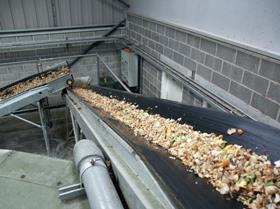
There is scope for retailers and food manufacturers to redistribute four times more edible food waste, according to a new report by the Waste and Resources Action Programme (WRAP).
The new report, which quantifies food surplus and waste in the grocery supply chain, found that these sectors in the UK are “highly efficient”, with less than five per cent food surplus, with waste levels lower than previously reported.
But despite this, food waste could be cut by a further 23 per cent by 2025 with the opportunity to redistribute food by four times as much, WRAP said.
Currently, 1.9 million tonnes of food is wasted in the UK grocery supply chain every year, with 0.7m tonnes being redistributed to people or diverted to animal feed.
FareShare CEO, Lindsay Boswell, estimated that only 10,000 tonnes of surplus food is currently redistributed to charities each year, and said “there’s clearly huge potential to do more”.
“Some food businesses may be unsure about the types of surplus food they can redistribute or feel daunted about the process, but FareShare will work with them to make it as easy and cost-effective as possible to identify and redistribute their good, surplus food to the people who need it most,” she said.
WRAP director Richard Swannell said: “Today’s report, which uses new and more robust methodologies, gives us the clearest indication yet of where, and why, food surpluses and waste occur.
“Through a combination of prevention, redistribution to people and diversion to animal feed, the grocery supply chain could, in the next 10 years, almost halve its avoidable food waste, from 2009 when we first started work in this area. This will significantly contribute to delivering the Courtauld 2025 food waste prevention target.”
Food & Drink Federation (FDF) corporate affairs director, Tim Rycroft, said: “We welcome the publication of these revised and more detailed estimates of food surpluses and waste for the UK. As a signatory to the Courtauld 2025 Commitment, FDF looks forward to working closely with our members, with other signatories and with WRAP to help deliver the food waste prevention target.”



